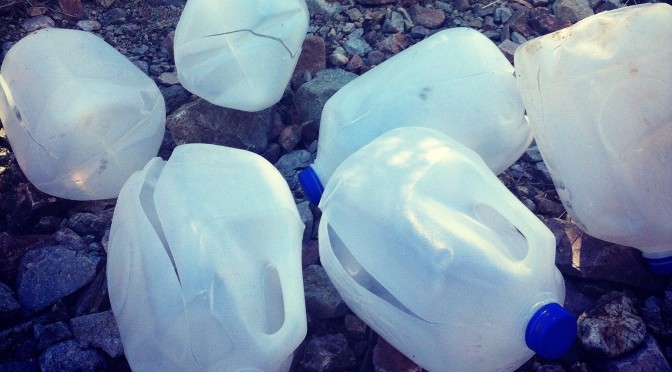In June 2015, No More Deaths and La Coalición de Derechos Humanos (Human Rights Coalition) received $10,000 from the Unitarian Universalist Service Committee to write three reports that document how border-enforcement policies and practices cause people to disappear while crossing the US–Mexico border. The first of these reports, to be released in early summer, focuses on two Border Patrol practices: destroying lifesaving humanitarian aid and intentionally scattering groups of migrants during apprehension.
The deportees describe how Border Patrol intentionally scatters groups, causing people to become separated, lost and disoriented in the deadly desert terrain.
No More Deaths has collected nearly four years of data documenting the destruction of food and water left out on trails for people crossing the border. We are currently working with a team from the University of Arizona to analyze the destruction patterns coming out of this data. We’ve also been collecting stories from deported people who get help at a dining hall, shelters, and a Mexican agency in Nogales, Sonora. The deportees describe how Border Patrol intentionally scatters groups of migrants, causing people to become separated from their group, separated from their guide, lost and disoriented in the deadly desert terrain.

These practices are extensions of the failed border policy of “Prevention Through Deterrence,” which uses the threat of death in the desert to dissuade individuals from crossing. The US Border Patrol has been rebranding itself as humanitarian, claiming that its agents are reducing migrant deaths in the desert. This claim will be contested in the second report in this series. It is the duty of humanitarian-aid groups to publicly denounce this gimmick and expose the Border Patrol policies that cause the deaths and disappearances of migrants crossing the US–Mexico border.
Text: Alicia Dinsmore.
Featured photo: Sophie Smith. Volunteers sometimes find water bottles on migrant trails—usually left there by other No More Deaths or Samaritans volunteers—that have been slashed. The vandalism denies lifesaving water to dehydrated travelers who follow these trails through the desert, like this area near Arivaca, Arizona.

